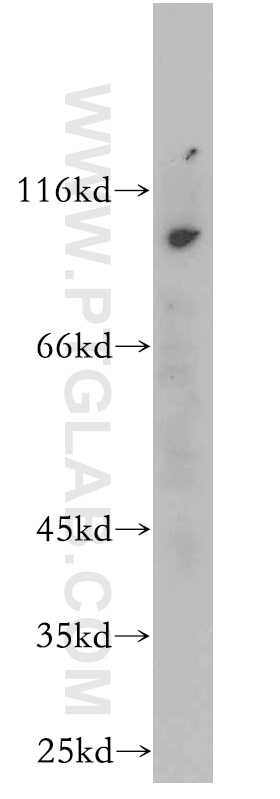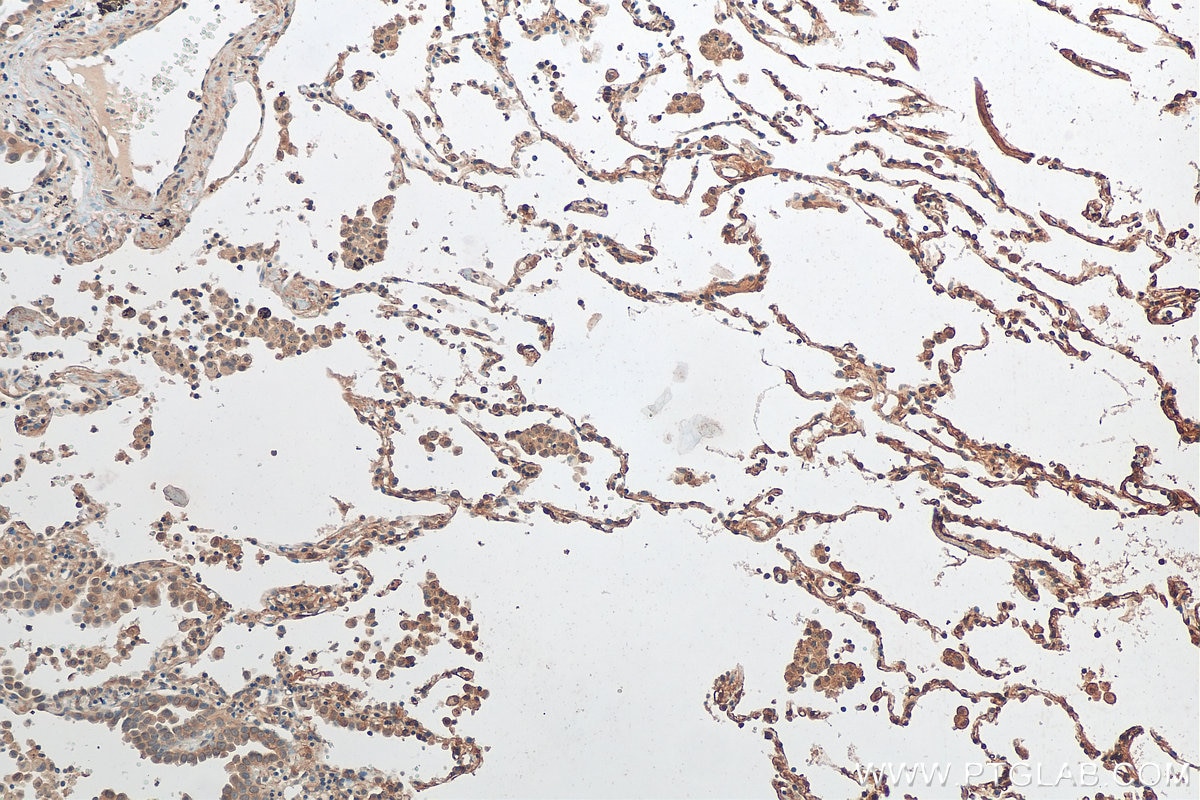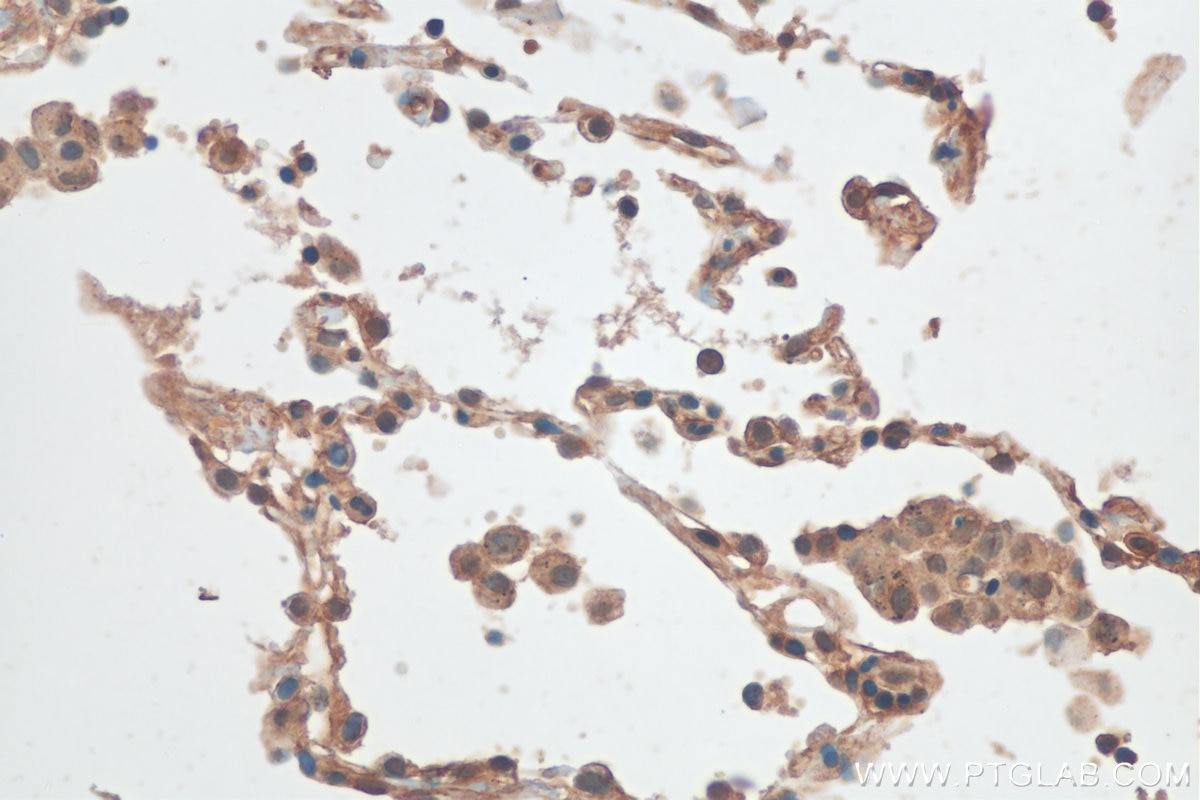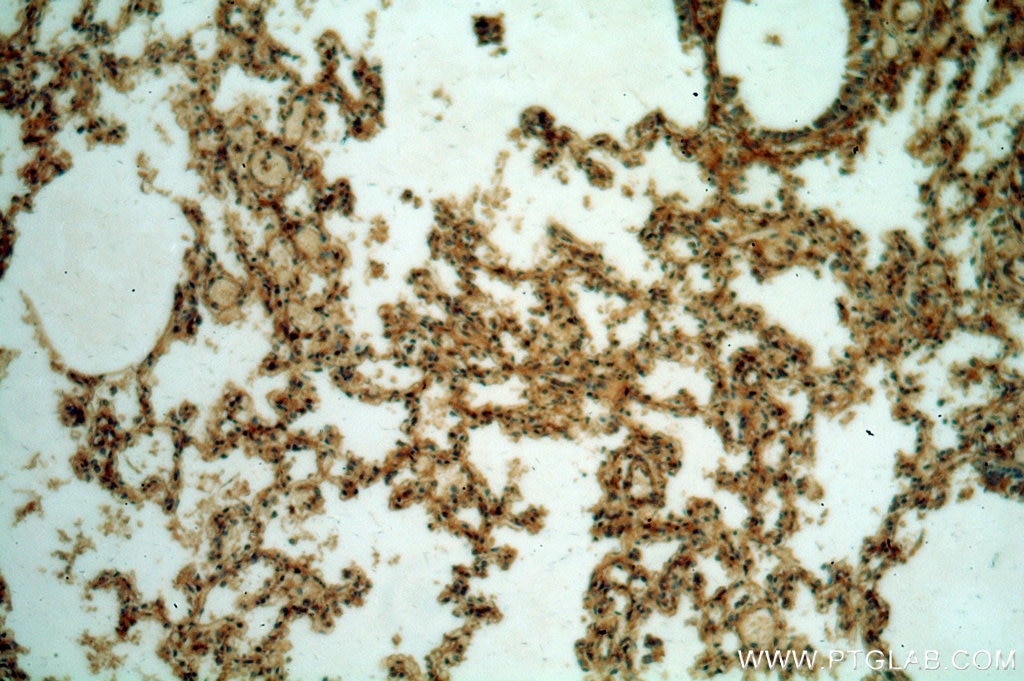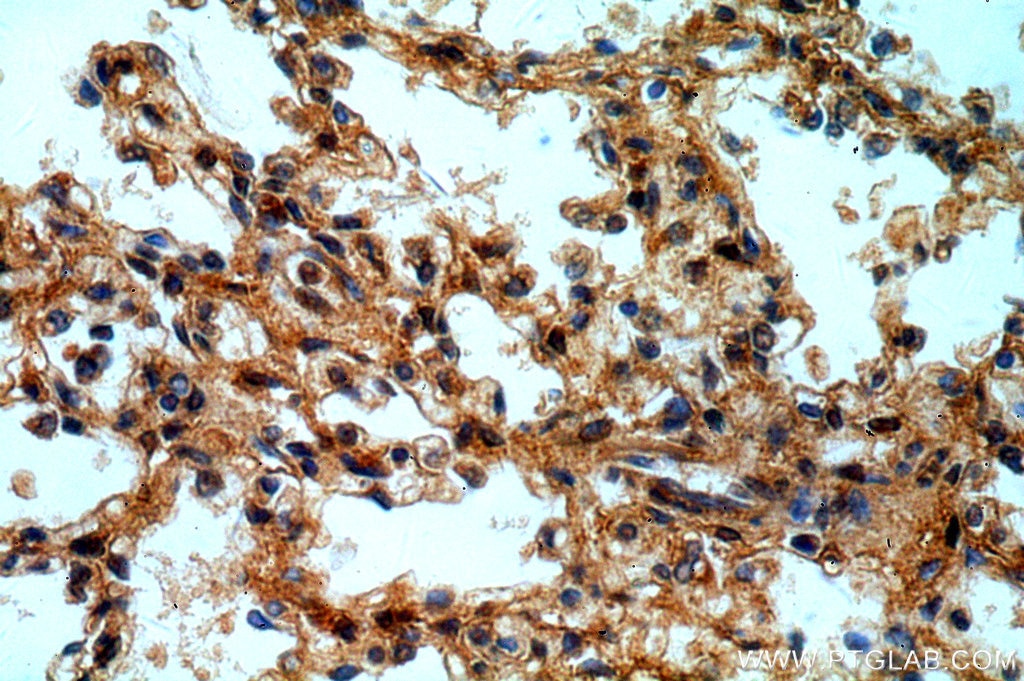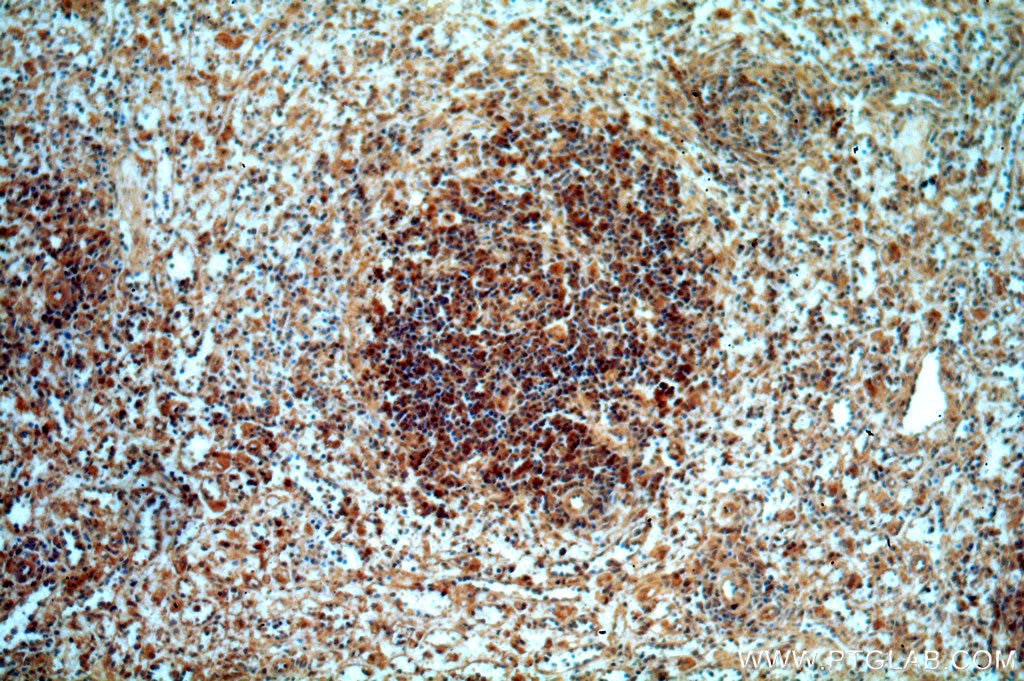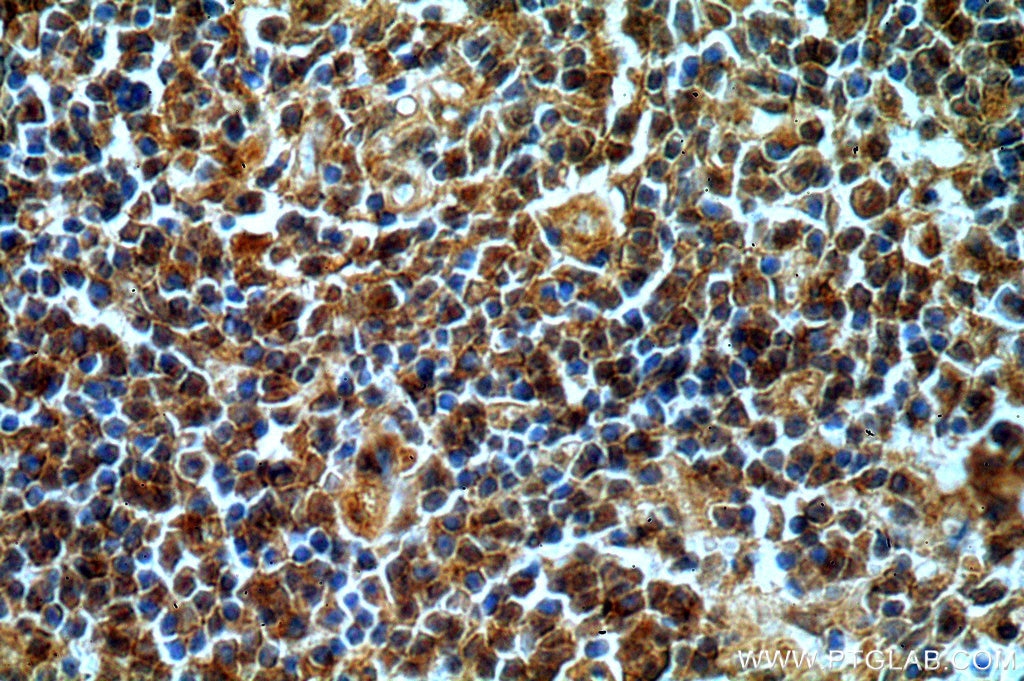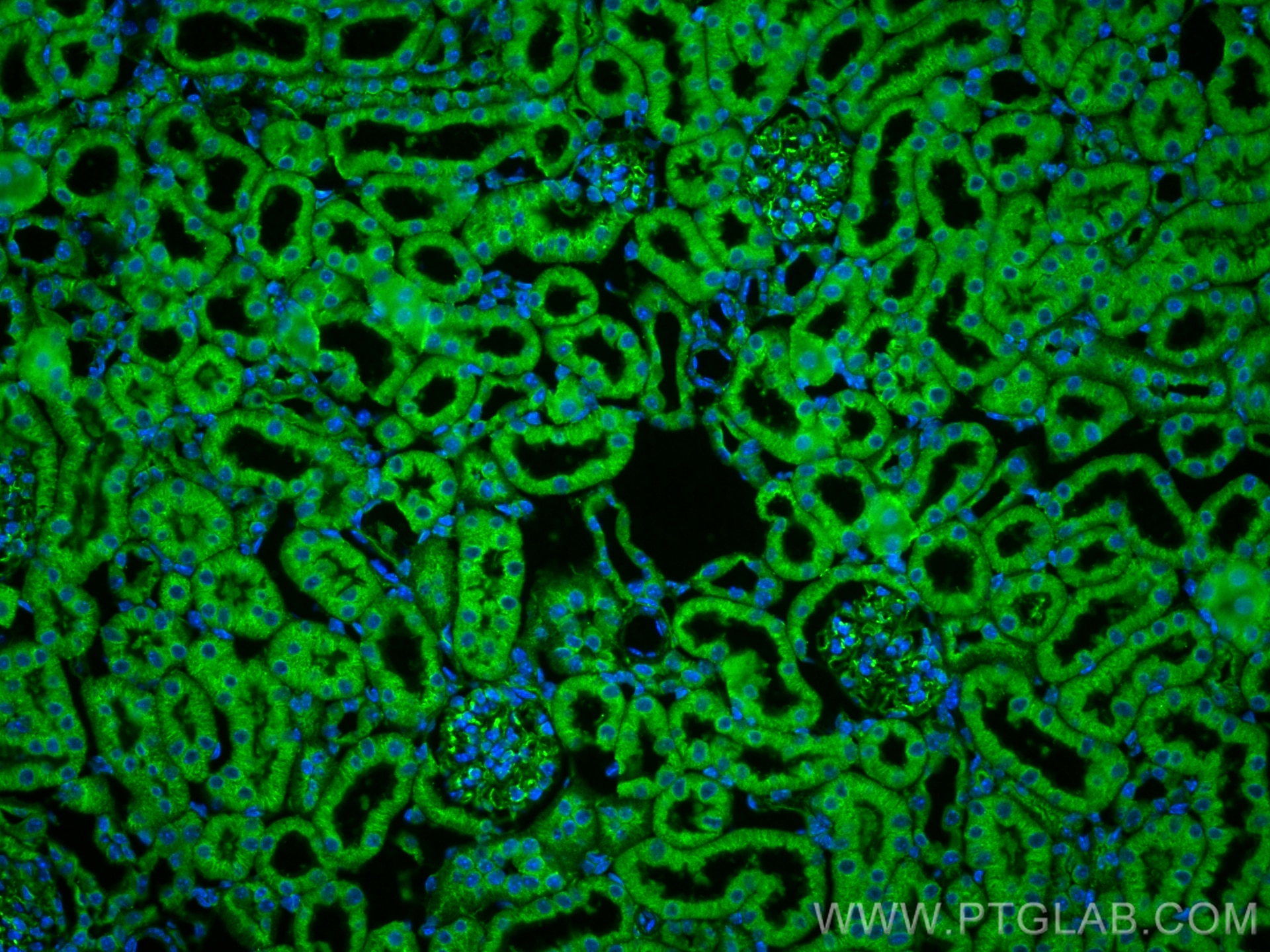CFAP47 Polyklonaler Antikörper
CFAP47 Polyklonal Antikörper für WB, IHC, IF-P, ELISA
Wirt / Isotyp
Kaninchen / IgG
Getestete Reaktivität
human, Maus
Anwendung
WB, IHC, IF-P, CoIP, ELISA
Konjugation
Unkonjugiert
Kat-Nr. : 20837-1-AP
Synonyme
Geprüfte Anwendungen
| Erfolgreiche Detektion in WB | Mauslungengewebe |
| Erfolgreiche Detektion in IHC | humanes Lungenkarzinomgewebe, humanes Lungengewebe, humanes Milzgewebe Hinweis: Antigendemaskierung mit TE-Puffer pH 9,0 empfohlen. (*) Wahlweise kann die Antigendemaskierung auch mit Citratpuffer pH 6,0 erfolgen. |
| Erfolgreiche Detektion in IF-P | Mausnierengewebe |
Empfohlene Verdünnung
| Anwendung | Verdünnung |
|---|---|
| Western Blot (WB) | WB : 1:500-1:1000 |
| Immunhistochemie (IHC) | IHC : 1:50-1:500 |
| Immunfluoreszenz (IF)-P | IF-P : 1:50-1:500 |
| It is recommended that this reagent should be titrated in each testing system to obtain optimal results. | |
| Sample-dependent, check data in validation data gallery | |
Veröffentlichte Anwendungen
| WB | See 1 publications below |
| IF | See 2 publications below |
| CoIP | See 1 publications below |
Produktinformation
20837-1-AP bindet in WB, IHC, IF-P, CoIP, ELISA CFAP47 und zeigt Reaktivität mit human, Maus
| Getestete Reaktivität | human, Maus |
| In Publikationen genannte Reaktivität | human, Maus |
| Wirt / Isotyp | Kaninchen / IgG |
| Klonalität | Polyklonal |
| Typ | Antikörper |
| Immunogen | CFAP47 fusion protein Ag14910 |
| Vollständiger Name | chromosome X open reading frame 22 |
| Berechnetes Molekulargewicht | 976 aa, 110 kDa |
| Beobachtetes Molekulargewicht | 100-110 kDa |
| GenBank-Zugangsnummer | BC027936 |
| Gene symbol | CFAP47/CXorf22 |
| Gene ID (NCBI) | 170063 |
| Konjugation | Unkonjugiert |
| Form | Liquid |
| Reinigungsmethode | Antigen-Affinitätsreinigung |
| Lagerungspuffer | PBS with 0.02% sodium azide and 50% glycerol |
| Lagerungsbedingungen | Bei -20°C lagern. Nach dem Versand ein Jahr lang stabil Aliquotieren ist bei -20oC Lagerung nicht notwendig. 20ul Größen enthalten 0,1% BSA. |
Hintergrundinformationen
CFAP47 (Cilia- and flagella-associated protein 47), formerly known as CXorf22, CXorf59, is located on the human chromosome X and highly expressed in the testis and encodes a cilia- and flagella-associated protein. CFAP47 was expressed in primary cilia of human kidney tubules, and knockout (KO) mice exhibited vacuolation of tubular cells and tubular dilation, providing evidence that CFAP47 is a causative gene involved in cyst formation (PMID: 33472045, 38633811). CFAP47-mutated male mice are sterile, with decreased sperm motility and abnormal flagella morphology (PMID: 37424856).
Protokolle
| PRODUKTSPEZIFISCHE PROTOKOLLE | |
|---|---|
| WB protocol for CFAP47 antibody 20837-1-AP | Protokoll herunterladen |
| IHC protocol for CFAP47 antibody 20837-1-AP | Protokoll herunterladenl |
| IF protocol for CFAP47 antibody 20837-1-AP | Protokoll herunterladen |
| STANDARD-PROTOKOLLE | |
|---|---|
| Klicken Sie hier, um unsere Standardprotokolle anzuzeigen |
Publikationen
| Species | Application | Title |
|---|---|---|
Mol Hum Reprod WDR87 interacts with CFAP47 protein in the middle piece of spermatozoa flagella to participate in sperm tail assembly | ||
medRxiv CFAP47 is a novel causative gene implicated in X-linked polycystic kidney disease |
